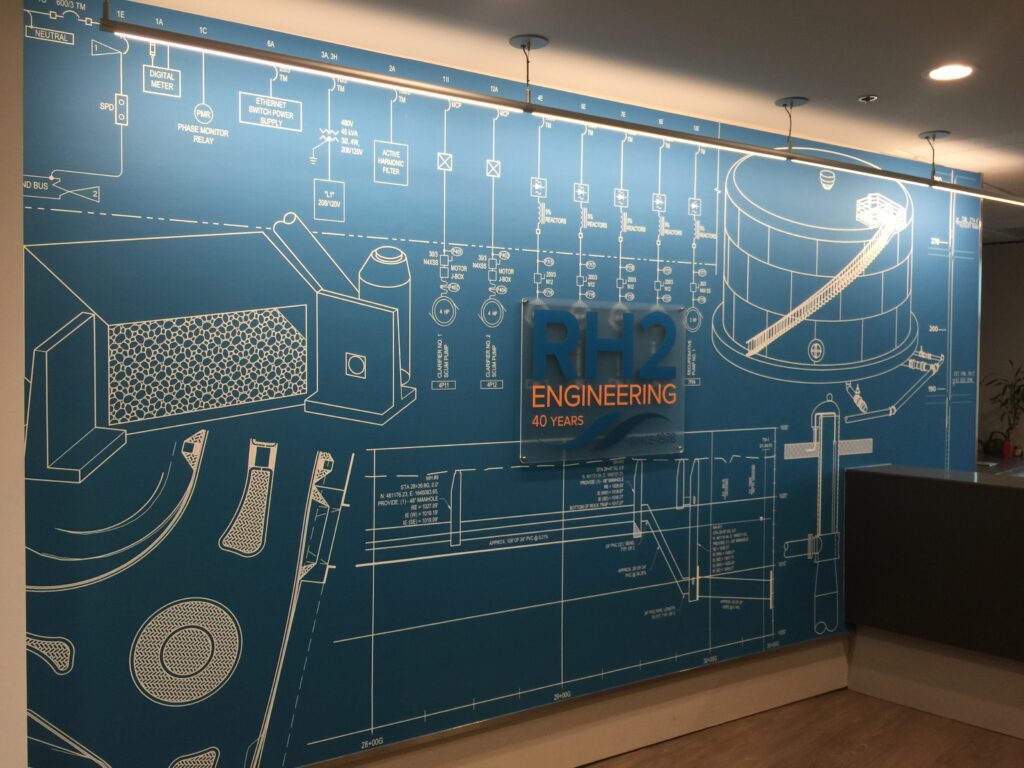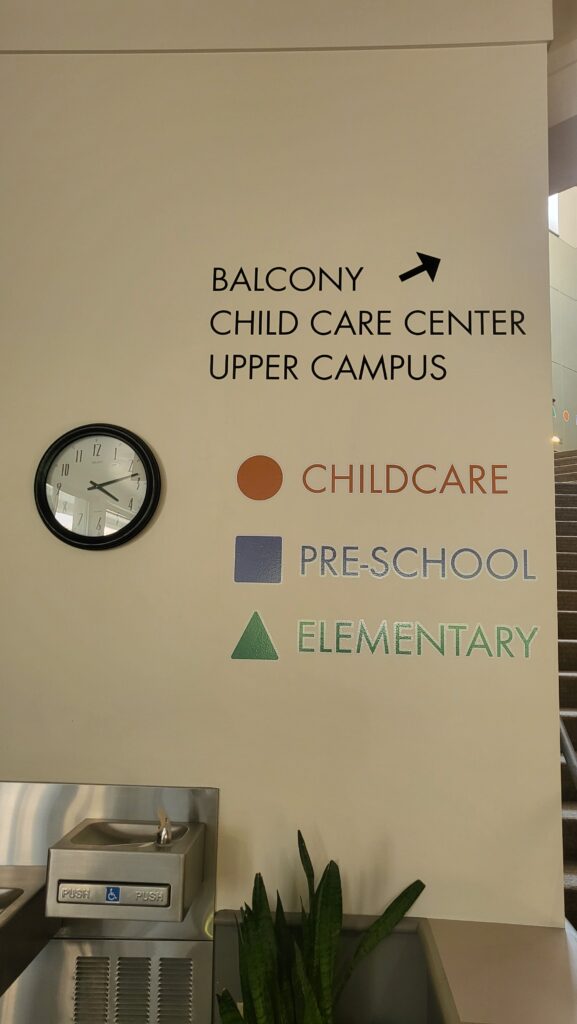Wayfinding signage has always served important navigational functions for visitors, tenants and customers, but the category now is much more than a means of giving directions. As companies increasingly mandate employees to return to onsite work, they’re using it to enhance employee and customer experiences with better–designed environment visuals.
Interior and exterior wayfinding solutions combined contribute to about 15% of our overall business, and we’re seeing growth in industries like technology, corporations, education and property management. Working with numerous companies in these industries, we have seen some noteworthy innovation in this market, giving designers the opportunity to create window graphics that are even more impactful for the user.
Innovation and Advancement
- Eco-friendly materials and printing options enable customers to decrease their environmental impact while leveraging walls and windows to increase their visual communications needs.
- Textured or specialty films can closely mimic the look of natural surfaces like wood, stone or fabric, at a lower cost than the natural versions.
- With digital print vinyl, sign companies can turn customers’ walls into effective visual communication surfaces.
- Anti-microbial coating and PVC-free materials are critical to the hygienic needs of hospitals and medical facilities, and these materials are now extremely popular.
- By using digital technologies like NFC tags, LED illumination and digital displays, sign companies can incorporate interactivity into wall and window signage designs.
Digital technology, in fact, has significantly transformed the design and implementation of wayfinding and environment graphics solutions. The use of interactive digital displays has been gaining momentum. These digital displays come in various dimensions, layouts, (freestanding, wall-mount) and touchscreen options. They offer real–time updates to locations, maps, messaging and location-based navigation that helps customers get to where they need to be efficiently. It’s ideal for environments with information that frequently changes and where real-time communication changes are important (think airports, hospitals and shopping malls).

Wayfinding designers must work with digital and non-digital technology alongside each other for seamless visual integration in the environment. Restricting yourself to only one format is among several common mistakes to avoid.
Cautions Ahead
Watch out for these missteps:
- Ignoring scale, lighting and viewability
It’s important to consider the distance at which visuals will attract attention and can be read and understood. The amount of content and sizing of important text needs to be taken into consideration. Don’t forget to assess the effect daytime or nighttime lighting might have on color rendering and readability.
- Failing to carefully select materials and prepare the wall surface
Do not take shortcuts when it comes to researching and understanding the wall surface type and the paint used (if any), and don’t skimp on surface preparation. Putting in the time and work to prep the wall for vinyl applications is critical for the long–term performance of the graphics, not to mention long-term customer satisfaction.
- Disregarding placement and traffic
Consider where these graphics will be installed. Outdoors, for instance, will the graphic stand up to local weather conditions? Will it be installed in high-traffic areas where risks of vandalism might be an issue? Considering these factors can also impact the material, build and installation decisions.
- Underestimating installation complexity
For younger sign shops, this is an area that is most frequently underestimated. Surveying the location is an important step that can uncover cost and installation issues. Look for the degree of surface smoothness, curved walls/corners, high ceilings, wall fixtures (e.g., fire alarms, power conduits, etc.) that might impact installation time and cost.
- Being unfamiliar with ADA requirements
Compliance with regulations of the American with Disabilities Act is critical to ensuring customer satisfaction and success for this area of the business. Be sure to familiarize your design, production and installation teams with the requirements of an ADA-compliant sign system. Specifically, Section 703 of the ADA Standards for Accessible Design is an important read. Work with customers and stakeholders to identify the appropriate language selection and determine layout considerations, particularly in signage that might be copy heavy. Designers will need to consider and balance compliancy, readability, consistency and overall visual aesthetics of the solution.
Effective signage goes beyond these basic considerations. Sign companies can distinguish themselves and gain a competitive advantage by demonstrating their commitment to design, quality build and unique material selection.

Beyond the Basics
Design must also incorporate a deep understanding of the customer’s values, culture and the vibes they want to project. This is critical to forming a well-executed design solution, but it means designers must get a sense of the project’s environmental and architectural considerations. Designers should learn about the user experience and the psychology of navigation and decision-making and how signage plays a role in influencing required outcomes.
Window graphics are typically defined by the available surface area and knowing that sign companies should first work with the customer to understand the purpose and audience for the window graphics. Are they intended to inform? To promote? Given the limitation of surface area, simplicity is key; avoid clutter by focusing on a single theme or message. Use bold elements, typography and color choices in the design to grab customers’ attention and as much as possible, reinforce the visual value of the window graphics by leveraging brand colors, logos and elements for a consistent, cohesive look.
As the designs, manufacturing, placements and installation of these systems are put in place, sign companies can help their customers through a series of strategies to evaluate the effectiveness and create opportunities to further improve the use of the system. Customers can conduct surveys to gather insights in their navigational experiences and observe how users are interacting with the wayfinding systems. They can leverage the use of real-time technologies like smart IoT apps and kiosk analytics to identify where there might be design or placement gaps. Finally, don’t forget to incorporate staff feedback. Reception and security staff are important sources of navigational feedback about the experiences users go through.
A New Direction
If you’re not already offering such services or you do so on a limited basis, it’s easy to expand to offer more full-service wayfinding solutions. You’ll find your shop attracting larger, longer-term customers who value a one-stop solution for their environmental branding needs. What’s more, since many of these products require regular updating and maintenance, you could also find yourself with a reliable source of repeat business.
Alex Fong has been the franchise owner of Signarama in Redmond, Washington for more than seven years. His location specializes in integrated marketing, brand, signage and visual marketing strategies for small and midsize businesses.











